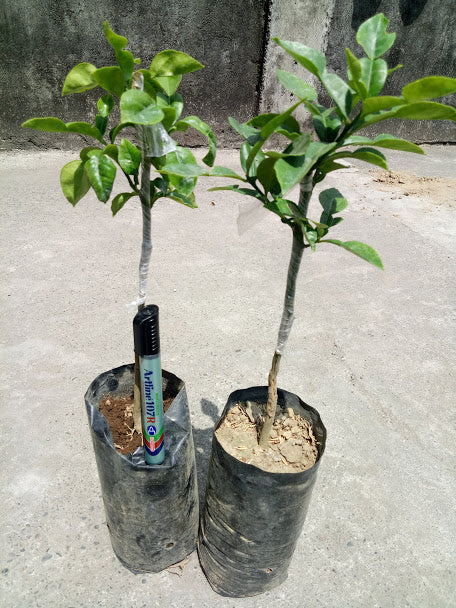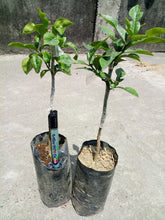Kaffir Lime
Regular price
₱600.00
₱550.00
Sale
Scientific Name: Citrus hystrix
A thorny bush, 2 to 11 metres (6 to 35 ft) tall, with aromatic and distinctively shaped "double" leaves. These hourglass-shaped leaves comprise the leaf blade plus a flattened, leaf-like stalk (or petiole). The fruit is rough and green, and ripens to yellow; it is distinguished by its bumpy exterior and its small size, approximately 4 cm (2 in) wide.
Uses
Cuisine
The leaves are the most frequently used part of the plant, fresh, dried, or frozen. The leaves are widely used in Thai and Lao cuisine (for dishes such as tom yum) and Cambodian cuisine (for the base paste "krueng")[18]. The leaves are used in Vietnamese cuisine to add fragrance to chicken dishes and to decrease the pungent odor when steaming snails. The leaves are used in Indonesian cuisine (especially Balinese cuisine and Javanese cuisine) for foods such as soto ayam and are used along with Indonesian bay leaf for chicken and fish. They are also found in Malaysian and Burmese cuisines. It is used widely in South Indian cuisine.
The rind (peel) is commonly used in Lao and Thai curry paste, adding an aromatic, astringent flavor. The zest of the fruit, referred to as combava[citation needed], is used in creole cuisine to impart flavor in infused rums and rougails in Mauritius, Réunion, and Madagascar. In Cambodia, the entire fruit is crystallized/candied for eating.
Medicinal
The juice and rinds of the peel are used in traditional medicine in some Asian countries; the fruit's juice is often used in shampoo and is believed to kill head lice.
Other uses
The juice finds use as a cleanser for clothing and hair in Thailand and very occasionally in Cambodia. Lustral water mixed with slices of the fruit is used in religious ceremonies in Cambodia.
Cultivation
C. hystrix is grown worldwide in suitable climates as a garden shrub for home fruit production. It is well suited to container gardens and for large garden pots on patios, terraces, and in conservatories.





